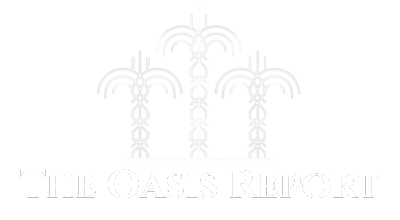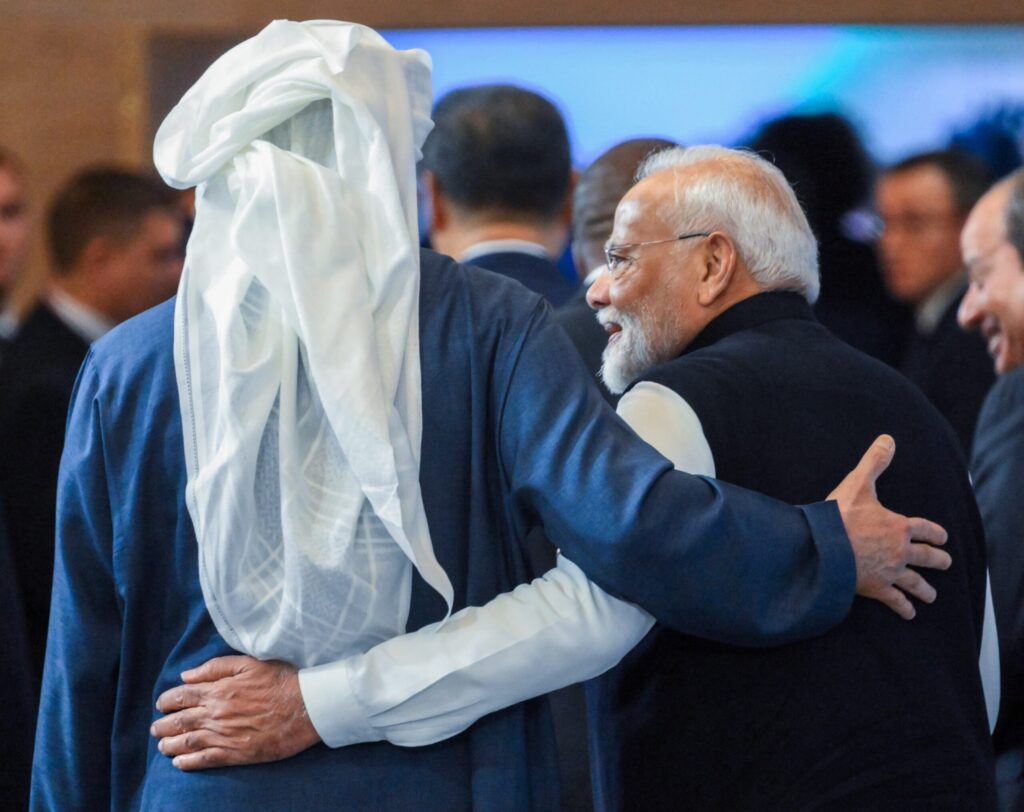GCC sovereign wealth funds have deepened their strategic commitment to Indian equities, even as Western fund managers pulled back from the market last autumn.
More attractive valuations, strong industry synergies with infrastructure giants such as the Adani Group and Reliance Industries, and a growing Indian commitment to Gulf security have all helped drive this investment megatrend.
The generations-old trade and economic links with the private sector in the GCC have also made India a natural destination for Gulf investors.
Trade ties forged in the age of the Dhow have now morphed into multi-billion deal flow in the age of the Supertanker and AI.
India is also a unique tariff and geopolitical safe haven for GCC funds amid the chaos of Trump 2.0 and a Cold War with China.
Although President Donald Trump has reversed his decision on the 145 percent tariffs, his threats of a de facto trade embargo with China and to remove Federal Reserve chairman Powell have deeply unsettled global capital markets.
Despite this, Trump maintained a soft spot for India’s Prime Minister Narendra Modi and enjoyed strong support from the Indian diaspora in the US during his historic second election victory.
India’s 26 percent tariff levy was much lower than those Trump imposed on its rival Asian export economies, from Vietnam’s 46 percent to the 36 percent slapped on exports from Thailand, Taiwan and Bangladesh.
Despite Modi’s “Make in India” focus, foreign trade is a mere 20 percent of the Indian GDP. Thus, the $4 trillion economy is relatively insulated from Trump’s protectionist caprice or even a trade war.
The primary driver of India’s GDP growth – currently at 6.5 percent, the highest among major emerging markets – is its youthful, highly educated population of 600 million citizens under the age of 30.
In India’s case, demographics truly are destiny.
Despite initial pressure from Trump’s tariff threats, the Indian rupee has staged a strong recovery
A cursory glance across corporate boardrooms, bank trading floors, entrepreneurial hubs and knowledge-based industries – from Dubai’s Meena Bazaar to Silicon Valley’s high-tech enclaves, from London’s Southall to the venture capital spin-offs of Cambridge’s Silicon Glen – confirms this powerful trend.
Modi’s India has also become a strategic ally of the US in its new Cold War with Xi’s China – a key reason why Vice President JD Vance made a state visit to prioritise negotiating a trade pact with Modi.
India has positioned itself as corporate America’s most obvious alternative to a factory exodus from China.
Modi made no secret of his conviction that he would do his best to eliminate the $50 billion bilateral trade surplus with the US by scaling up the purchase of high-tech US military hardware and shipments of US LNG from Houston to the Adani-run port of Mundra.
India’s largest LNG supplier is now Qatar. Still, the logic of gas realpolitik and the economics of LNG tanker transport mean that US LNG cargoes will soon eclipse Qatari tanker shipments to India. That much, at least, is certain.
India is Asia’s second-largest oil importer after China, consuming 5.4 million barrels of crude oil per day. It is no coincidence that Indian equities recovered all their losses in the Nifty Index’s swoon after Trump first announced reciprocal tariffs.
This precipitated a mini-global financial meltdown and asset class/credit contagion that evoked the ghost of the post-Lehman ice age in capital markets in 2009.
Despite initial pressure from Trump’s tariff threats, the Indian rupee has staged a strong recovery against the US dollar, rising to 85.50 even as Southeast Asian currencies like the Indonesian rupiah and Vietnamese dong sank to lows not seen since the 1998 Asian financial crisis.
This resilience has been underpinned by a $1 billion surge in offshore fund inflows into Indian equities and a sharp decline in Brent crude prices to $65 a barrel, engineered by Saudi Arabia’s oil price war.
The resulting $50 billion current account windfall mirrors the oil crash of 2014-2015 that bolstered Modi’s first term, reinforcing India’s economic and policy stability even amid global volatility.
India and the US are true allies in an anti-PRC strategic alliance that Washington has patiently nurtured under every American President of both parties since Bill Clinton.
With Russia and China now effectively uninvestable and Brazil mired in deep recession under its octogenarian socialist leadership, US pension funds and university endowments have little choice but to chart their own course to India – the only emerging market within the original BRICs constellation that still offers compelling growth metrics.
Two decades ago, the BRICs were expected to midwife a resurgent Global South, yet much of that promise has remained trapped in the rhetorical flourishes of self-serving statesmen rather than actual economic transformation.
Matein Khalid is an investor in global financial markets and board adviser to leading family offices in the UAE and Saudi Arabia
Register now: It’s easy and free
AGBI registered members can access even more of our unique analysis and perspective on business and economics in the Middle East.
Why sign uP
Exclusive weekly email from our editor-in-chief
Personalised weekly emails for your preferred industry sectors
Read and download our insight packed white papers
Access to our mobile app
Prioritised access to live events
Already registered? Sign in
I’ll register later



